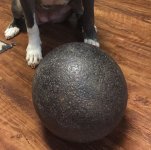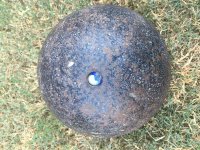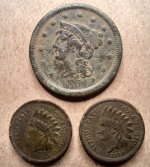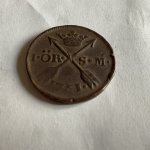Coreymainit
Tenderfoot
- Oct 8, 2019
- 6
- 11
- Primary Interest:
- All Treasure Hunting
So I have this Cannonball in my possession. It’s 48.8 lbs and 8-10 inches in diameter. It has a hole on one side where somebody shoved a marble in it. Not sure if it has black powder in it or not. Anybody have any guesses at it’s worth or potential origins? I live in North Texas but it was not found in the ground by me so I’m not sure if it was used in battle here.
I’m told there is a man on here who knows just about everything there is to know about Cannonballs. Hopefully he can give me his 2cents.

I’m told there is a man on here who knows just about everything there is to know about Cannonballs. Hopefully he can give me his 2cents.









